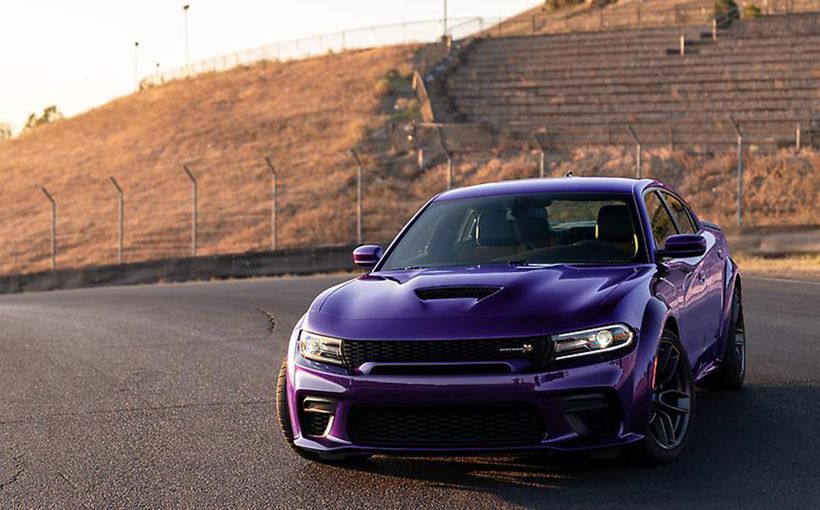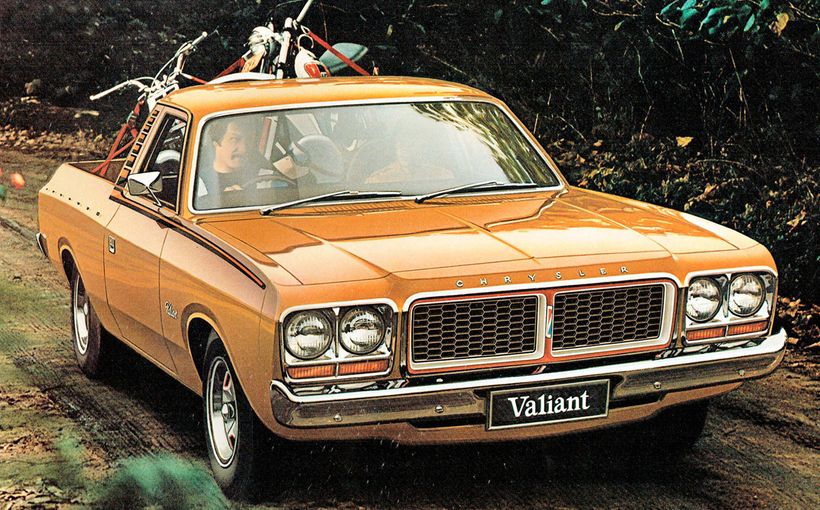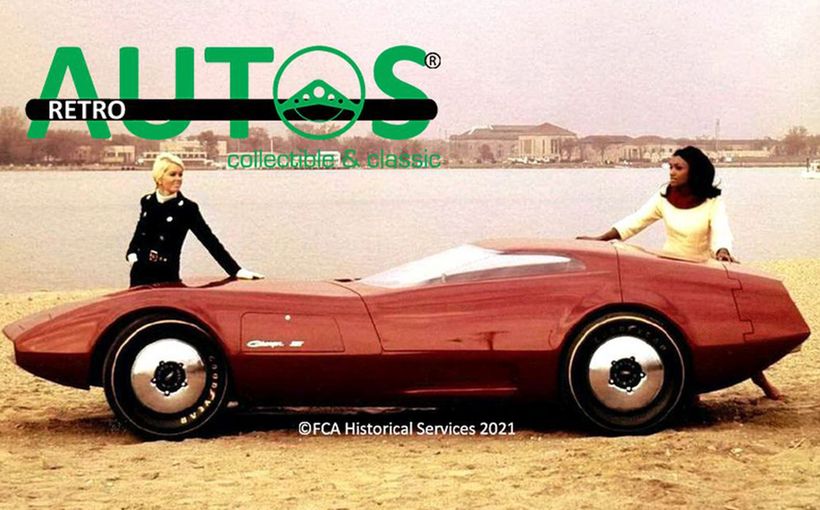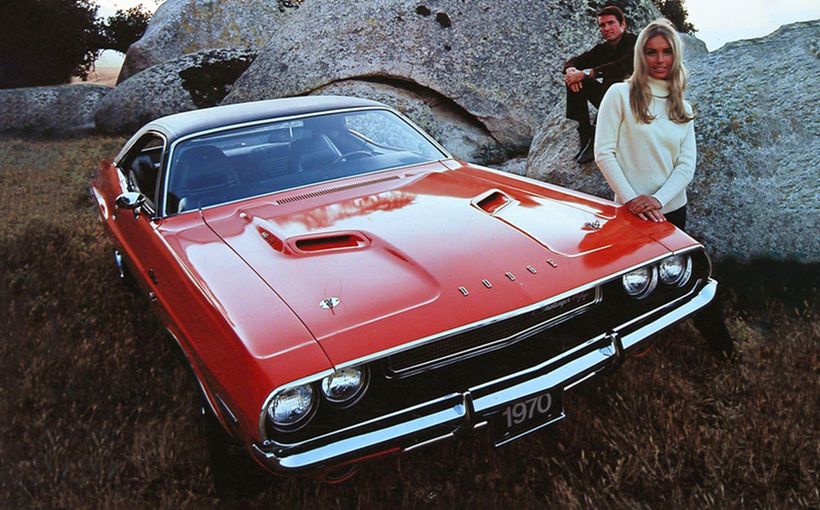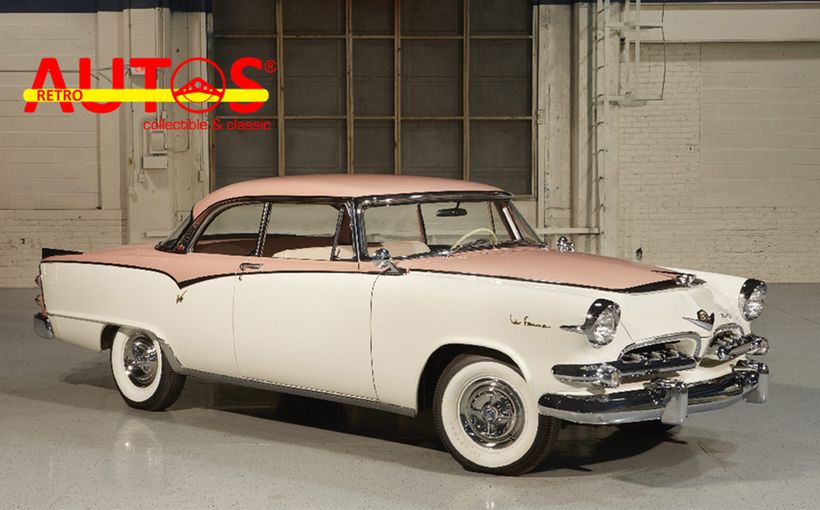Dodge Phoenix: Chrysler’s unique Aussie-American flagship

1960
“Here’s the car of your life for the time of your life!” claimed Chrysler Australia’s sales brochure for its new Dodge Phoenix. Based on the latest Dodge Dart Phoenix released for the 1960 model year in the US, the first Australian Phoenix was assembled locally from imported CKD (Completely Knocked Down) kits.
Chrysler Australia’s new-decade response to local Ford and GM-H full-size American imports differed from its US cousin due to an amalgam of local and imported parts, which included a RHD Plymouth dash (not surprising given the Dart’s Plymouth Fury origins) and local content including relatively dull paint colours, skinny wheels and plain hubcaps that lacked the panache of US versions. This reflected not only cost-containment but also Australia's conservative motoring culture of those times.
Even so, the Australian Dodge Phoenix showcased the latest US trends by Chrysler’s extroverted design chief Virgil Exner, including the remnants of 1950s ‘space age’ styling with quad headlights, a switch from traditional body-on-frame to tighter and quieter ‘Unibody’ construction and the less floaty ride and more responsive handling of ‘Torsionaire’ torsion bar front suspension for its expansive 118-inch (2997mm) wheelbase.

Image: Stellantis
Overall length was almost 5.3 metres and width almost 2.0 metres (similar to a Ranger dual cab ute), which dwarfed the latest FB Holden at around 4.6 metres and 1.7 metres respectively.
The new Phoenix offered plush bench seats front and rear, with fold-down centre armrests for each. It was available in two grades comprising the entry level ‘de Luxe’ and top-shelf ‘Luxury Liner’ which included power brakes, power steering, heater, windscreen washers and push-button radio as standard equipment.
The Phoenix was also blessed with a powerful drivetrain comprising the latest two-barrel twin-exhaust version of Chrysler’s 318cid (5.2-litre) ‘polyspherical’ V8 producing 230bhp (172kW) and 340ft/lbs (461Nm). This was paired with Chrysler’s A904 ‘Torqueflite’ push-button three-speed automatic, which was widely considered to be the best of its type.
Magazine road-testers praised the Phoenix’s ride quality and the effortless urge of its potent V8. However, they also suggested the vague low-ratio steering and 11-inch drum brakes were marginal for a car weighing almost 1600kg with a top speed of more than 160km/h.

Image: Stellantis
1961
“Here is the car you will either own or envy!” claimed Chrysler Australia’s sales brochure for the 1961 Phoenix, which also extolled the glamour of it being “the latest imported American” even though it was assembled locally from a kit with considerable Australian content.
The 1961 model was effectively a carry-over of the previous year, but slightly longer and wider with kerb weights starting at 1668kg for the de Luxe and just over 1700kg for the top-shelf Luxury Liner.
“Once you handle this thoroughbred you’ll never be happy with anything else!” Chrysler exclaimed, even though the mechanical specifications were unchanged.
The biggest talking point was Exner’s controversial new front and rear styling, featuring a full-width concave grille reminiscent of a portable bar-heater and tail fins that faced the wrong way. 1961 Dodge sales took a nosedive in the US.

Image: Stellantis
1962
Here was an all-new body style for the Aussie Dodge Phoenix, more compact in length and width than its predecessor, riding on a shorter 116-inch wheelbase and with a substantial 170kg drop in kerb weight to a relatively athletic 1530kg.
For different reasons, the confronting new styling was as polarising as its predecessor, which combined with the ill-conceived downsizing ensured another US sales dive for Dodge in 1962 and an unworthy legacy for Chrysler’s departing Virgil Exner.
Ironically, this downsizing was a positive for the Australian Phoenix; less of a ‘yank tank’ appearance and a substantial boost in performance with a 17-second standing quarter and a top speed exceeding 170km/h from its 318 V8 and Torqueflite push-button auto.

Image: Stellantis
Now available in only one model grade, the ’62 Phoenix was a fast and powerful car for its time, which was in keeping with the sparkling slant-six performance of its smaller R-series Valiant stablemate, which shared the same unibody construction and torsion-bar front suspension design.
Other key factors in the Phoenix’s favour were that its dashboard display and prominent styling ridges above the wheel-arches had a family resemblance to the Valiant with which it shared local showrooms.

Image: https://en.wheelsage.org/dodge/phoenix
1963
Although the Phoenix model name had been dropped in the US, Chrysler Australia continued using it having established a loyal following, particularly among regional buyers.
As a result, the Aussie 1963 Phoenix was a rebadged RHD version of the latest Dodge 440/Polara, featuring a new 119-inch (3023mm) wheelbase and a substantial length increase that matched the 1960-61 models.
Even so, there was only a slight increase in kerb weight and mechanicals were largely carried over.

Image: https://en.wheelsage.org/dodge/phoenix
The more conservative influence of Chrysler’s newly appointed ex-Ford design chief Elwood Engel was evident in the new model’s cleaner and more conventional lines.
However, the grille continued to divide opinion, with the latest iteration at least providing some styling continuity between models after Exner’s disjointed efforts.

Image: https://en.wheelsage.org/dodge/phoenix
1964
“A car for the discriminating – isn’t that you?” Chrysler’s brochure asked potential buyers to decide if the “The Incomparable Dodge Phoenix” was indeed the car for them. For loyal buyers, which typically included dignitaries, business executives and wealthy graziers, it had no equal.
1963 styling was largely carried over to the 1964 model, with slightly longer and narrower body dimensions and a slight increase in rear track to match the previously wider front. The vague steering and relatively small drum brakes continued to attract criticism from magazine road-testers.
The front and rear were given styling updates, most noticeably the new grille which continued its conservative styling evolution with the primary and auxiliary headlights now positioned more conventionally beside each other in individual bezels.
The previous year’s interior design, with its wide and sumptuous bench seats and fold-down centre armrests front and rear, also remained unchanged apart from minor cosmetic updates.

Image: Stellantis
1965
“Dodge Phoenix carries about itself an aura of expensive finesse, far exceeding the price you pay for it” claimed Chrysler, as another all-new design heralded the arrival of the latest badge-engineered Aussie Dodge Phoenix.
According to the sales brochure, it was “the car that speaks well of your success” and certainly looked the part. This time the handsome American was derived from the latest Plymouth Fury III, based on Chrysler’s new corporate C-body full-size sedan platform.

Image: Stellantis
The visual similarities between the latest Aussie Phoenix and Ford’s all-new 1965 Galaxie range, with their crisp, clean lines, grille designs and vertical twin-headlights, suggested that Engel knew of Ford’s future styling directions before he departed!
The new Phoenix retained the same proven drivetrain and luxurious 119-inch wheelbase but the front and rear track were wider and the new bodywork was slightly shorter and wider. There was also a new dashboard and instrument display, dominated by anti-glare hoods shrouding the two main dials.

Image: https://en.wheelsage.org/dodge/phoenix
1966
There were subtle styling revisions inside and out for 1966, consistent with changes made to the Plymouth mothership from which the local Phoenix was derived.
Changes to the grille, rear bodywork and dashboard were credible enhancements that kept the Phoenix looking fresh. A significant change inside was a switch from the traditional front bench seat with fold-down centre armrest (favoured by those needing six-seater comfort) to individual bucket seats.

Image: Stellantis
In his history of Chrysler Australia, Great Ideas in Motion, author Gavin Farmer noted that in a 1966 Wheels magazine road-test of the latest Phoenix “they praised its cruising capability, roominess, quietness and quality of assembly but criticised its steering, brakes and body rattles on rough roads.”
Wheels concluded that: “We suspect that the Phoenix is not as tough and durable as its reputation would have it, but despite that it sells well to country people – probably better than any other big American. It is certainly the most luxurious and best handling of the locally-assembled big brothers, and thus the best for interstate work.”

Image: Stellantis
1967
Chrysler Australia announced unprecedented changes for the 1967 Dodge Phoenix, offering two new body styles and two new V8 engines to broaden choice for Aussie buyers.
Phoenix buyers could choose between the regular four-door sedan or a new premium four-door pillarless hardtop. Although the sedan carried over the previous model’s roof and glasshouse with new front and rear styling, the pillarless hardtop was new.
Even so, apart from a slight length increase, the external dimensions and stacked headlights were consistent with previous models, even though body overhangs were more prominent and probably less appealing for buyers using rough rural roads.

Image: Stellantis
The lower-priced sedan was equipped with Chrysler’s latest LA small-block V8, which although lighter and more compact than the ageing ‘poly’ V8 it replaced shared the same bore and stroke and therefore the same 318cid (5.2-litre) capacity and outputs. This LA engine family was also shared with the local Valiant range.
Premium hardtop buyers had exclusive access to a mighty 383cid (6.3-litre) V8 from Chrysler's big-block 'B' engine family, with wedge-shaped combustion chambers distinct from Chrysler’s famous Hemi. The 383 produced 270bhp (201kW) and a whopping 390ft/lbs (528Nm) of effortless Detroit-style torque.

Image: Stellantis
Although the hardtop had a granite-crushing kerb weight of almost 1800kg, its big V8 ensured it could accelerate from 0-100km/h in just under 10 seconds and easily exceed 100mph (160km/h) in magazine tests. However, four-wheel drum brakes on such a heavy and powerful car were increasingly hard to forgive, at a time when front discs were becoming an industry standard.
The Phoenix’s local fortunes were also not helped by Chrysler Australia’s decision in 1967 to move assembly from its relatively modern Adelaide plant in Tonsley Park to its ageing ex-Rootes Group facility in Port Melbourne, with comparitively primitive tooling and work methods. As a result, word spread quickly of noticeable declines in build quality and finish compared to the previous Adelaide-built cars.

Image: Stellantis
1968
“The magnificent Dodge Phoenix is absolute automotive authority. And automotive integrity. It reflects refinement and excellent taste. It commands respect. It is sumptuous but not ostentatious. Visibly luxurious. Supremely comfortable.”
Chrysler’s marketing team could well have earned a bonus for cramming the highest number of superlatives into the Dodge Phoenix’s 1968 sales brochure!
However, there were few changes for the two-model Phoenix range in 1968, highlighted by mild styling revisions and more luggage space.

Image: Stellantis
1969-71
The Dodge Phoenix range received its final restyle in 1969 courtesy of its Plymouth Fury US donor. Although the new look was smooth and restrained, the Phoenix sedan and hardtop shared an imposing appearance with long tail overhangs and ‘yank tank’ perceptions that contributed to a terminal sales decline.
The wheelbase had increased to 120-inches (3048mm) and it was longer and wider than its predecessor. However, no increase in track width to reduce the noticeable overhang inside its wheel-arches contributed to a bloated appearance, which was a shame given the latest model was improved in many areas.
Better late than never, the final Phoenix was finally equipped with front disc brakes, in this case power-assisted Kelsey-Hayes 11.8-inch ventilated rotors and single-piston calipers, paired with the venerable 11-inch rear drums carried over from previous models. Drivetrains were largely unchanged, but the 383 V8’s power output increased from 270 to 290bhp (216kW).

Image: https://en.wheelsage.org/dodge/phoenix
Although magazine road-testers generally praised the ride quality and handling of the latest Phoenix, along with its enhanced braking performance, the vague and lifeless steering feel remained. Even so, the hardtop with its powerful but thirsty big block V8 was still capable of 0-100km/h in less than 10 seconds, the standing quarter in just over 17 seconds and 105mph (168km/h) top speed.
Apart from minor styling revisions, the definitive Australian Dodge Phoenix remained fundamentally unchanged from its introduction in 1969 to its withdrawal from the local market in 1971.
During that time, Chrysler Australia adopted a ‘Iimited edition’ marketing strategy designed to stimulate sales by capping each model year at 400 units, with each example fitted with an ID plate displaying its unique build number between 1 and 400.

Image: https://en.wheelsage.org/dodge/phoenix
However, by 1971 the Phoenix had been made largely redundant by the launch of Chrysler Australia’s all-new local VH/CH Valiant range, which although smaller than the full-size American car included a luxurious LWB Chrysler by Chrysler model.
GM-H also made its full-size US imports obsolete by including a LWB Statesman model in its local-designed HQ Holden range launched in 1971 and Ford would soon follow with a stretched LTD model following the launch of its XA Falcon range in 1972. It was the end of the big American sedan era in Australia.



